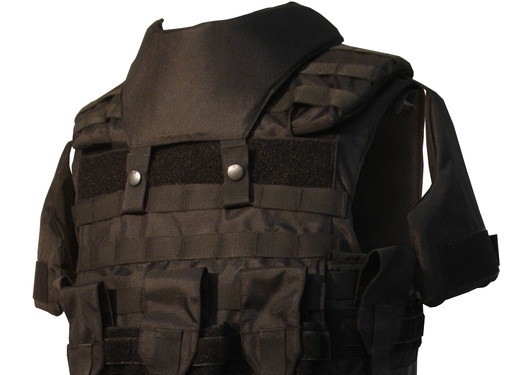Why would you want to wear body armor unless you were planning a vacation in Baghdad or a late evening jog through Newark? The reason is simple. Things are getting pretty tough out there. There are more guns than ever in the wrong hands and more of those hands are willing to pull the trigger. The only safe solution to enhance your personal self defense, if you have to be in dangerous places, is to have body armor. Choose a good provider though. We recommend Shaun Ward Vestguard if you want an affordable and quality one.
What is body armor in the first place? Think of it as a sleeveless T-shirt or vest that can slow down a bullet fired at your core. The key word is core. Body armor or a bullet proof vest is not for your arms and legs and head. It is designed to stop damage to those key organ systems found in your chest and abdominal regions. Body armor protects you by slowing the bullet down and dispersing that energy over a wider area of the bullet proof vest. It does that by using layers of man-made fabrics. Each layer put in front of the bullet helps disburse the energy and deform the bullet until it loses energy and stops. You will still feel like you have been hit by a sledge but you will be alive to complain about it. But not all body armor is made the same.

Each company in the body armor business has a different set of fabric layers for their products. Each set of layers is designed to protect you against different calibers. After all, a .22 caliber does not have the same force as a .44 caliber. Since uniform standards were a problem, the National Institute of Justice (NIJ) now conducts tests body armor and rates vests according to what they are designed to do. A rating of 1 is designed to protect the wearer from smaller calibers such as the .22. A rating of 4 is designed to protect from very large calibers such as the .44 magnum. Body armor vests are not designed to protect from knives and high caliber rifles. In most cases, a body armor vest with a 2 or 2A rating is the usual choice for most police department daily wear and will cost between $000 to $000. But if you are in law enforcement or the homeland security field why not maximize your personal self defense and buy something like the highest level of protection such as a 4 and protect against everything? The answer is easy.
More layers are required to stop higher calibers and more layers mean more weight. Those additional layers will retain body heat. While the protection will be there, the comfort will not and you may start leaving your vest behind. Keep in mind that all body armor is not the same. Check the labels on the product. Almost half of your choices have not passed the NIJ standards test. You want proven protection and not the cheapest thing out there. To protect yourself from the deadly threat now found on almost any American street, remember the Rule of 3: 1. Be sure your body armor is rated for the most common threat you will face. 2. Be sure it is comfortable to wear. 3. Be sure it has successfully passed NIJ standards test. Then you may be one of the 2,400 plus people who will go home to their family tonight because good body armor did the job it was designed to do.










Comments are closed.